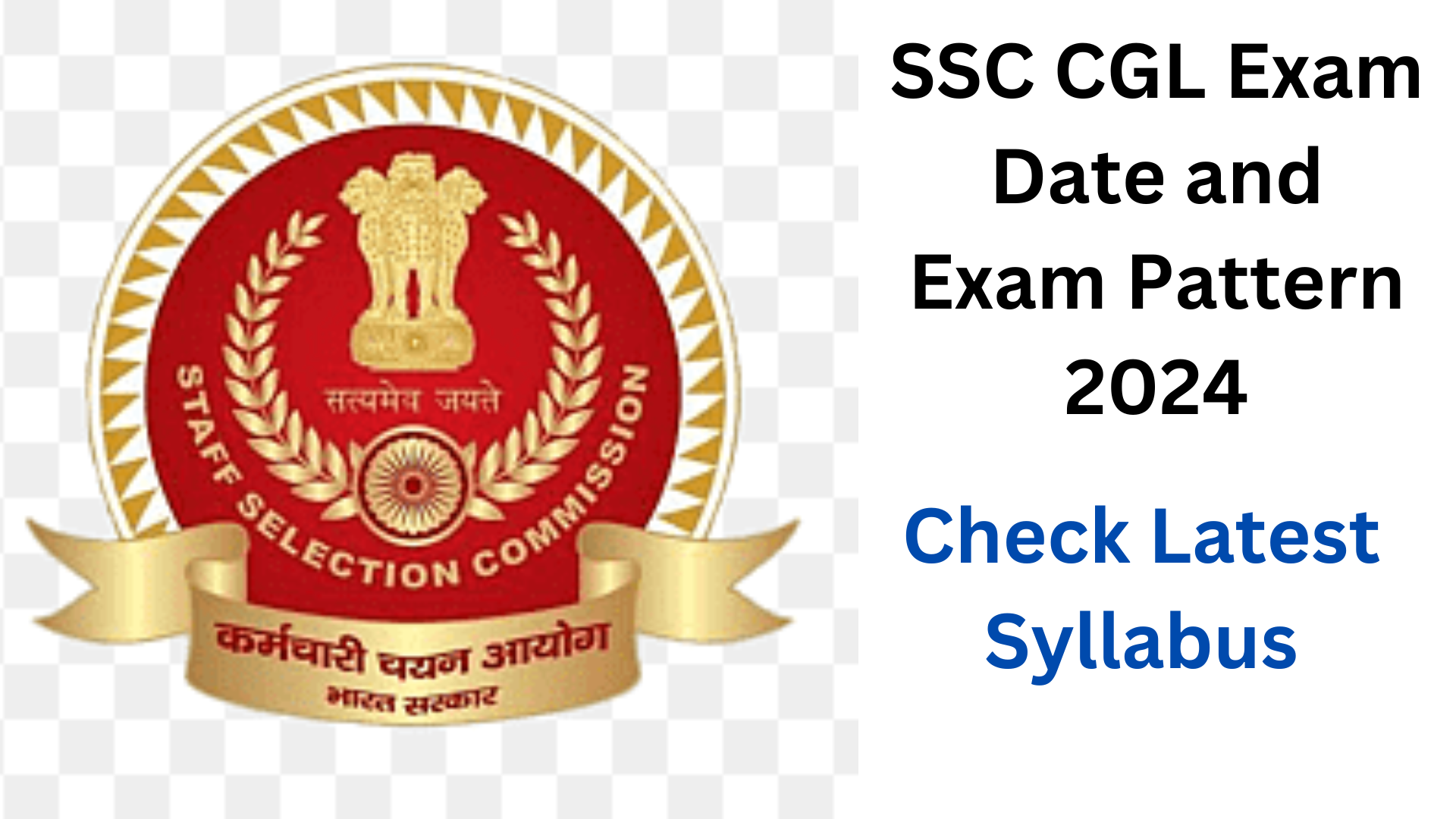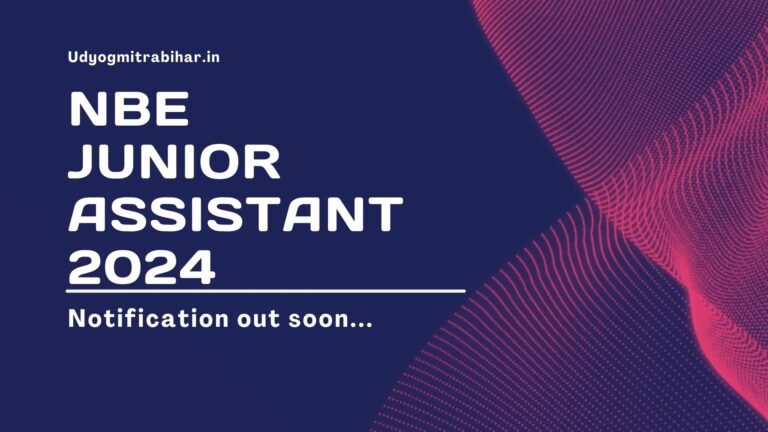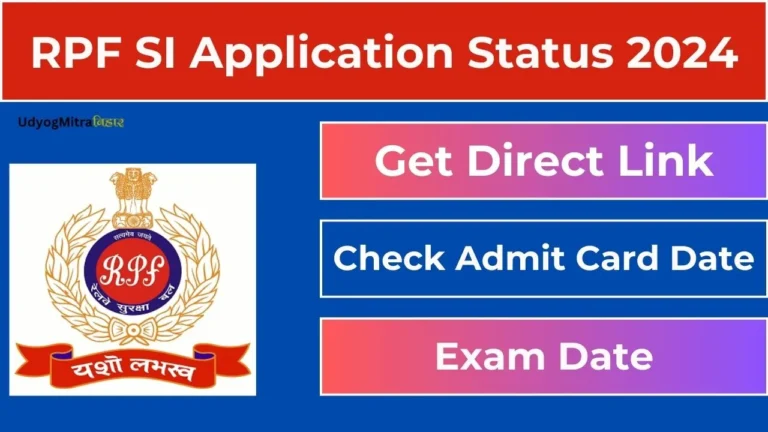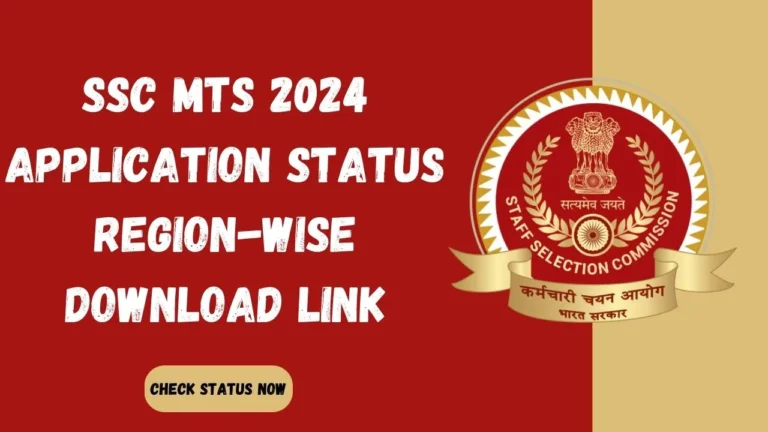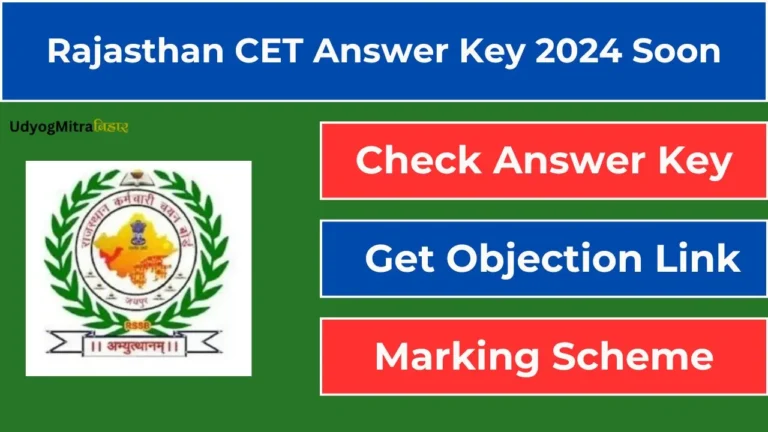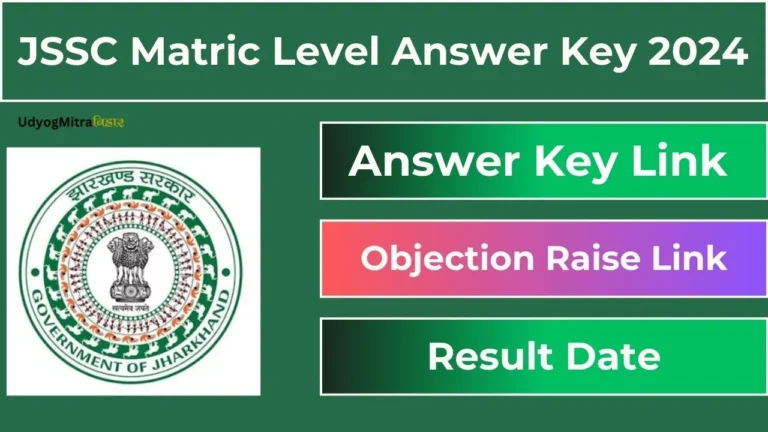The Staff Selection Commission (SSC) has released the SSC Combined Graduate Level recruitment notification for 2024. If you’re preparing for the examination, you should consider checking out the exam date,
This syllabus covers both Tier 1 and Tier 2 exams. Having a clear understanding of this comprehensive syllabus is crucial for candidates preparing for the upcoming SSC CGL Exam.
The detailed syllabus for both Tier 1 and Tier 2 has been provided in the article below to help candidates with their preparation.
Contents
- 1 Overview of SSC CGL Notification 2024
- 2 Tier 1 Exam Pattern
- 3 SSC CGL Tier 1 Exam Syllabus
- 4 SSC CGL Tier 2 Exam Pattern
- 5 SSC CGL Tier 2 Exam Pattern
- 6 SSC CGL Tier 2 Syllabus 2024
- 7 Important Points Regarding SSC CGL Syllabus 2024
- 8 FAQ’s:
Overview of SSC CGL Notification 2024
| Category | Details |
| Exam Name | SSC CGL 2024 |
| SSC CGL Full Form | Staff Selection Commission Combined Graduate Level |
| Conducting Body | Staff Selection Commission |
| Vacancies | 17727 (Tentative) |
| Exam Type | National Level |
| Mode of Application | Online |
| Application Dates | 24th June to 24th July 2024 |
| Exam Dates | Sep-Oct 2024 |
| Mode of Exam | Online |
| Basic Eligibility | Indian citizenship & Graduate (bachelor’s degree in relevant discipline) |
| Selection Process | Tier 1 (Qualifying)Tier 2 |
| Official Website | www.ssc.gov.in |
Tier 1 Exam Pattern
The SSC CGL Tier 1 exam consists of four sections: General Intelligence and Reasoning, General Awareness, Quantitative Aptitude, and English Comprehension.
Each section contains 25 questions, making a total of 100 questions for the entire exam. Each question is worth 2 marks, so the total possible score is 200 marks.
Here’s a breakdown of the sections, the number of questions in each, and their corresponding total marks:
- General Intelligence and Reasoning: 25 questions, 50 marks
- General Awareness: 25 questions, 50 marks
- Quantitative Aptitude: 25 questions, 50 marks
- English Comprehension: 25 questions, 50 marks
In total, there are 100 questions worth 200 marks with a duration of 60 minutes.
SSC CGL Tier 1 Exam Syllabus
SSC CGL English Language Syllabus 2024
The English Language section includes various topics aimed at assessing the candidate’s command of English. These topics are:
- Reading Comprehension
- Idioms and Phrases
- One Word Substitution
- Sentence Correction
- Active and Passive Voice
- Spelling Correction
- Fill in the Blanks
- Sentence Rearrangement
- Synonyms and Antonyms
- Cloze Test
- Sentence Improvement
- Error Spotting
SSC CGL General Awareness Syllabus 2024
The General Awareness section covers a wide range of topics. Candidates should be familiar with:
- Important Days
- Science
- India and its neighboring countries, especially related to History, Culture, Geography, Economic Scene, General Policy & Scientific Research
- People in News
- Sports
- Static GK (General Knowledge)
- Important Schemes
- Portfolio
- Books and Authors
- Current Affairs
SSC CGL General Intelligence Syllabus 2024
The General Intelligence and Reasoning section tests logical and analytical abilities. Topics include:
- Discrimination
- Observation
- Coding and Decoding
- Arithmetic Number Series
- Relationship Concepts
- Arithmetical Reasoning
- Figural Classification
- Statement Conclusion
- Syllogistic Reasoning
- Similarities and Differences
- Space Visualization
- Spatial Orientation
- Problem-Solving
- Analysis
- Non-Verbal Series
- Judgment
- Blood Relations
- Decision Making
- Visual Memory
- Analogies
SSC CGL Quantitative Aptitude Syllabus 2024
The Quantitative Aptitude section assesses numerical ability and mathematical skills. Topics covered are:
- Percentage
- Partnership Business
- Time and Distance
- Time and Work
- Mixture and Alligation
- Decimals
- Fractions
- Quadrilaterals
- Regular Polygons
- Right Prism
- Right Circular Cone
- Interest
- Sphere
- Basic Algebraic Identities of School Algebra & Elementary Surds
- Profit and Loss
- Discount
- Relationships between Numbers
- Ratio and Proportion
- Square Roots
- Computation of Whole Numbers
- Right Circular Cylinder
- Triangle and its Various Kinds of Centers
- Graphs of Linear Equations
- Averages
- Congruence and Similarity of Triangles
- Circle and its Chords, Tangents, Angles Subtended by Chords of a Circle, Common Tangents to Two or More Circles
- Complementary Angles
- Bar Diagram & Pie Chart
- Triangle
- Frequency Polygon
- Degree and Radian Measures
- Hemispheres
- Histogram
- Regular Right Pyramid with Triangular or Square Base
- Trigonometric Ratio
- Heights and Distances
- Standard Identities
- Rectangular Parallelepiped
SSC CGL Tier 2 Exam Pattern
The SSC CGL Tier 2 Examination is conducted in two sessions: Session 1 and Session 2. Session 1 includes Paper 1, while Session 2 includes Paper 2 and Paper 3. Below is the detailed exam pattern for SSC CGL Tier 2:
Session 1: Paper 1
- Paper 1: This paper includes various sections assessing quantitative, reasoning, and English skills.
Session 2: Paper 2 & Paper 3
- Paper 2: This paper focuses on subjects like Statistics.
- Paper 3: This paper is for candidates applying for specific posts and focuses on topics related to General Studies (Finance and Economics).
The exact distribution of marks, number of questions, and detailed subjects will be provided in the official notification or syllabus document. Make sure to check the official SSC notification for the most accurate and detailed information.
SSC CGL Tier 2 Exam Pattern
The Tier 2 examination is conducted in two sessions, with different papers and sections. Below is a detailed overview of the exam pattern:
Section 1 of Paper 1
- Mathematical Abilities
- Maximum Questions: 30
- Maximum Marks: 90
- Weightage: 23%
- Duration: 1 hour
- Reasoning and General Intelligence
- Maximum Questions: 30
- Maximum Marks: 90
- Weightage: 23%
- Duration: Combined with Mathematical Abilities
Section 2 of Paper 1
- English Language and Comprehension
- Maximum Questions: 45
- Maximum Marks: 135
- Weightage: 35%
- Duration: 1 hour
- General Awareness
- Maximum Questions: 25
- Maximum Marks: 75
- Weightage: 19%
- Duration: Combined with English Language and Comprehension
Section 3 of Paper 1
- Computer Knowledge Test
- Maximum Questions: 20
- Maximum Marks: 60
- Weightage: Qualifying
- Duration: 15 minutes
- Data Entry Speed Test
- One Data Entry Task
- Weightage: Qualifying
- Duration: 15 minutes
Paper II
- General Studies (Finance and Economics)
- Maximum Questions: 100
- Maximum Marks: 200
- Duration: 2 hours
Paper III
- Statistics
- Maximum Questions: 100
- Maximum Marks: 200
- Duration: 2 hours
Key Points
- The Tier 2 exam is divided into multiple papers and sections, with specific subjects and varying weights.
- Paper 1 includes sections on Mathematical Abilities, Reasoning, English, General Awareness, Computer Knowledge, and Data Entry Speed Test.
- Paper II focuses on General Studies related to Finance and Economics.
- Paper III is dedicated to Statistics.
- Some sections are qualifying in nature, while others contribute to the final score.
- Candidates should allocate their preparation time according to the weightage and duration of each section.
SSC CGL Tier 2 Syllabus 2024
The SSC CGL Tier 2 examination is divided into three papers, each focusing on different subjects and applicable to various posts. Here is a detailed breakdown of the syllabus:
Paper I: This paper is mandatory for all posts.
Section-I of Paper-I: Mathematical Abilities
Module I: Number Systems
- Computation of Whole Number
- Decimal and Fractions
- Relationship between numbers
- Fundamental arithmetical operations
- Percentages
- Ratio and Proportion
- Square roots
- Averages
- Interest (Simple and Compound)
- Profit and Loss
- Discount
- Partnership Business
- Mixture and Alligation
- Time and distance
- Time and work
- Algebra
- Basic algebraic identities of School Algebra and Elementary surds (simple problems)
- Graphs of Linear Equations
- Geometry
- Similarity with elementary geometric figures and facts: Triangle and its various kinds of centres
- Congruence and similarity of triangles
- Circle and its chords, tangents, angles subtended by chords of a circle, common tangents to two or more circles.
- Mensuration
- Right Prism
- Triangle
- Quadrilaterals
- Regular Polygons
- Circle
- Right Circular Cone
- Right Circular Cylinder
- Sphere
- Hemispheres
- Rectangular Parallelepiped
- Regular Right Pyramid with triangular or square Base.
- Trigonometry
- Trigonometric ratios
- Complementary angles
- Height and distances (simple problems only)
- Standard Identities
- Statistics and Probability
- Use of Tables and Graphs: Histogram, Frequency polygon, Bar-diagram, Pie-chart
- Measures of central tendency: mean, median, mode, standard deviation
- Calculation of simple probabilities
Module II of Section I: General Intelligence (Paper 1)
- Semantic Analogy
- Symbolic operations, Symbolic/ Number Analogy, Trends
- Figural Analogy
- Space Orientation
- Semantic Classification
- Venn Diagrams
- Symbolic/ Number Classification
- Drawing inferences
- Figural Classification
- Punched hole/ pattern-folding & unfolding
- Semantic Series
- Figural Pattern Folding and completion
- Number Series
- Embedded figures
- Figural Series
- Critical Thinking
- Problem-Solving
- Emotional Intelligence
- Word Building
- Social Intelligence
- Coding and decoding
- Numerical operations
- Other subtopics, if any.
Module II of Section I: English Language (Paper 1)
- Vocabulary
- One word substitution
- Sentence structure
- Shuffling of Sentences in a Passage
- Fill in the Blanks
- Synonyms/Homonyms
- Shuffling of Sentence parts
- Spellings/ Detecting misspelt words
- Idioms & Phrases
- Improvement of Sentences
- Antonyms
- Active/ Passive Voice of Verbs
- Conversion into Direct/ Indirect narration
- Spot the Error
- English Grammar
- Cloze Passage
Module II of Section I: General Awareness (Paper 1)
- Portfolio
- India and its neighboring countries especially about History, Culture, Geography, Economic Scene, General Policy & Scientific Research
- Science
- Current Affairs
- Books and Authors
- Sports
- Important Schemes
- Important Days & Dates
- People in News
Paper II: This paper is for candidates applying for the Junior Statistical Officer (JSO) positions.
SSC CGL Tier 2 Syllabus- Statistics (Paper II)
- Collection, Classification, and Presentation of Statistical Data
- Primary and Secondary data, Tabulation of data; Frequency distributions; Graphs and charts; Methods of data collection; and Diagrammatic presentation of frequency distributions.
- Measures of Central Tendency
- Common measures of central tendency – mean, median, and mode; Partition values- quartiles, deciles, percentiles.
- Measures of Dispersion
- Range, quartile deviations, mean deviation, and standard deviation; Measures of relative dispersion.
- Moments, Skewness, and Kurtosis
- Different types of moments and their relationship; the meaning of skewness and kurtosis; different measures of skewness and kurtosis.
- Correlation and Regression
- Scatter diagram; simple correlation coefficient; simple regression lines; Spearman’s rank correlation; Measures of association of attributes; Multiple regression; Multiple and partial correlation (For three variables only).
- Probability Theory
- Meaning of probability; Different definitions of probability; Conditional probability; Compound probability; Independent events; Bayes’ theorem.
- Random Variable and Probability Distributions
- Random variable; Probability functions; Expectation and Variance of a random variable; Higher moments of a random variable; Binomial, Poisson, Normal, and Exponential distributions; Joint distribution of two random variables (discrete).
- Sampling Theory
- Concept of population and sample; Parameter and statistic, Sampling and non-sampling errors; Probability and nonprobability sampling techniques (simple random sampling, stratified sampling, multistage sampling, multiphase sampling, cluster sampling, systematic sampling, purposive sampling, convenience sampling and quota sampling); Sampling distribution (statement only); Sample size decisions.
- Statistical Inference
- Point estimation and interval estimation, Properties of a good estimator, Methods of estimation (Moments method, Maximum likelihood method, Least squares method), Testing of hypothesis, Basic concept of testing, Small sample and large sample tests, Tests based on Z, t, Chi-square and F statistic, Confidence intervals.
- Analysis of Variance
- Analysis of one-way classified data and two-way classified data.
- Time Series Analysis
- Components of time series, Determination of trend components by different methods, Measurement of seasonal variation by different methods.
- Index Numbers
- Meaning of Index Numbers, Problems in the construction of index numbers, Types of index numbers, Different formulae, Base shifting and splicing of index numbers, Cost of living Index Numbers, Uses of Index Numbers.
Paper III: This paper is for candidates applying for the positions of Assistant Audit Officer/Assistant Accounts Officer.
SSC CGL Tier 2 Syllabus- Paper 3 (Finance and Economics)
Part A: Finance and Accounts (80 Marks)
- Financial Accounting
- Nature and scope
- Limitations of Financial Accounting
- Basic Concepts and Conventions
- Generally Accepted Accounting Principles
- Basic concepts of accounting
- Single and double-entry
- Books of Original Entry
- Bank Reconciliation
- Journal, ledgers
- Trial Balance
- Rectification of Errors
- Manufacturing
- Trading
- Profit & Loss Appropriation Accounts
- Balance Sheet
- Distinction between Capital and Revenue Expenditure
- Depreciation Accounting
- Valuation of Inventories
- Non-profit organizations Accounts
- Receipts and Payments and Income & Expenditure Accounts
- Bills of Exchange
- Self Balancing Ledgers
Part B: Economics and Governance (120 marks)
- Comptroller & Auditor General of India
- Constitutional Provisions, Role, and Responsibility
- Finance Commission
- Role and functions
- Basic Concept of Economics and Introduction to Microeconomics
- Definition
- Scope and Nature of Economics
- Methods of economic study
- Central problems of an economy
- Production possibilities curve
- Theory of Demand and Supply
- Meaning and determinants of demand
- Law of demand and Elasticity of demand
- Price, Income, and cross elasticity
- Theory of consumer behavior
- Marshallian approach and Indifference curve approach
- Meaning and determinants of supply
- Law of supply
- The elasticity of Supply
- Theory of Production and Cost
- Meaning and Factors of Production
- Laws of production- Law of variable proportions and Laws of returns to scale.
- Forms of Market and Price Determination in Different Markets
- Various forms of markets-Perfect Competition, Monopoly, Monopolistic Competition, Oligopoly
- Price determination in these markets.
- Indian Economy
- Nature of the Indian Economy, Role of different sectors, Role of Agriculture, Industry, and Services problems and growth.
- National Income of India- Concepts of national income, Different methods of measuring national income.
- Population size, rate of growth, and its implication on economic growth.
- Poverty and unemployment- Absolute and relative poverty, types, causes, and incidence of unemployment.
- Infrastructure-Energy, Transportation, Communication.
- Economic Reforms in India
- Economic reforms since 1991
- Liberalisation
- Privatization
- Globalization
- Disinvestment
- Money and Banking
- Monetary/ Fiscal policy- Role and functions of Reserve Bank of India; functions of commercial Banks/RRB/Payment Banks.
- Budget and Fiscal deficits and Balance of payments.
- Fiscal Responsibility and Budget Management Act, 2003.
- Information Technology
- Role of Information Technology in Governance
Important Points Regarding SSC CGL Syllabus 2024
Candidates aiming to apply for the SSC CGL exam should familiarize themselves with the SSC CGL Syllabus and Exam Pattern for 2024. Here are some key points to note about the syllabus and paper pattern for Tier 1 and Tier 2:
- Comprehensive Syllabus:
- The SSC CGL Syllabus covers sections like Reasoning & Intelligence, Mathematics, English Language and Comprehension, and General Awareness. Candidates must prepare thoroughly for each section.
- Mandatory Tier-I Examination:
- The Tier-I examination is mandatory for all positions mentioned in the SSC CGL notification. Therefore, candidates need to prepare for both Tier 1 and Tier 2 exams simultaneously.
- Tier 2 Examination Structure:
- Paper I: Compulsory for all roles.
- Paper II: For candidates applying for Junior Statistical Officer (JSO) positions in the Ministry of Statistics and Programme Implementation.
- Paper III: For applicants seeking positions as Assistant Audit Officer/Assistant Accounts Officer.
- Negative Marking in Tier-I:
- An incorrect answer in Tier-I results in a deduction of 0.5 marks.
- Negative Marking in Tier-II:
- There is a negative marking of 1 mark for each wrong answer in Paper I, Paper II, and Paper III of Tier-II.
For more detailed information regarding the Syllabus and Exam pattern, you can visit the SSC CGL Website.
similar articles worth reading:
- Download SSC CGL Admit Card 2024
- SSC CGL Recruitment 2024 for Various Posts
- SSC Exams – Full Information about SSC Exams
- SSC CGL Tier 1 Result 2024
FAQ’s:
Q: What are the subjects included in the SSC CGL 2024 syllabus?
The SSC CGL 2024 syllabus comprises four main subjects: General Intelligence & Reasoning, General Awareness, Quantitative Aptitude and English Comprehension
Q: How can I effectively prepare for the General Awareness section?
To prepare for General Awareness: Stay updated with current affairs by reading newspapers and following news websites. Focus on static GK topics such as history, geography, and basic science.
Refer to General Knowledge books and yearbooks for comprehensive preparation.
Q: Is there a negative marking in the SSC CGL exam?
Yes, there is a negative marking in the SSC CGL exam: In Tier I, an incorrect answer results in a deduction of 0.5 marks. In Tier II, there is a negative marking of 1 mark for each wrong answer in Paper I, Paper II, and Paper III.

